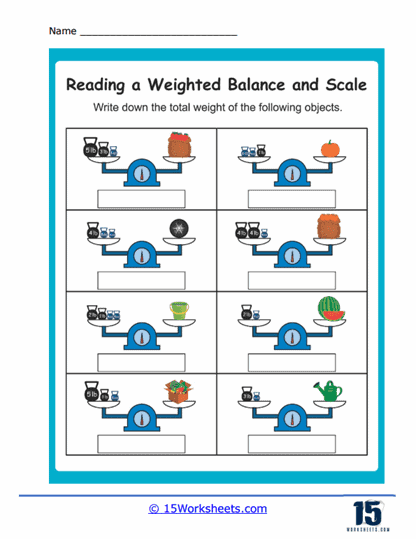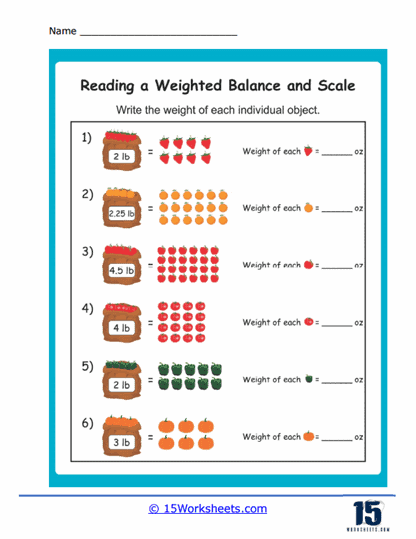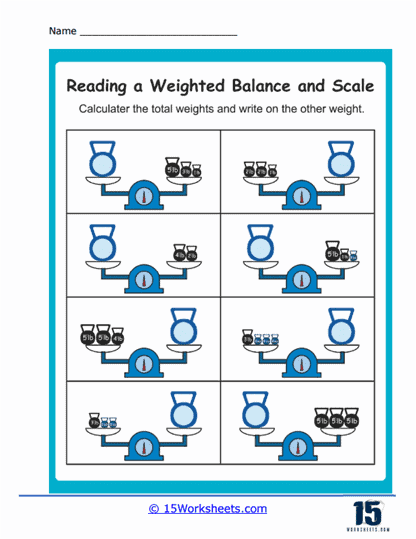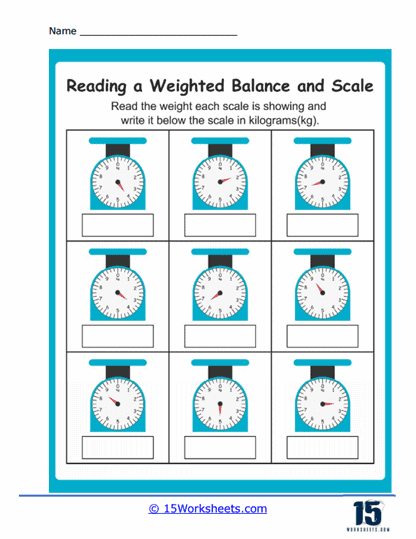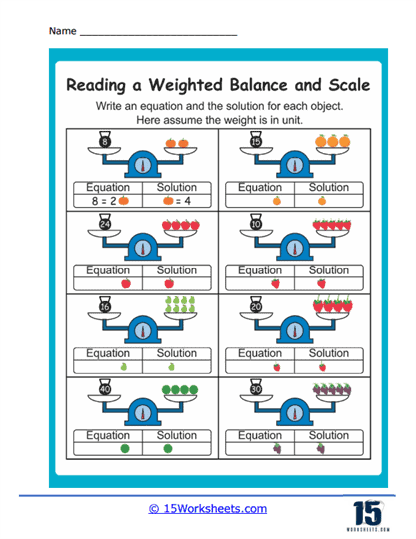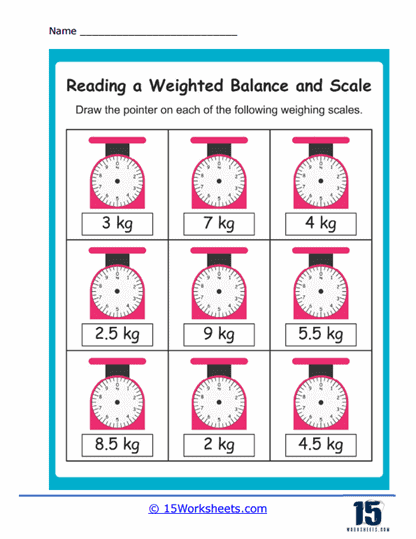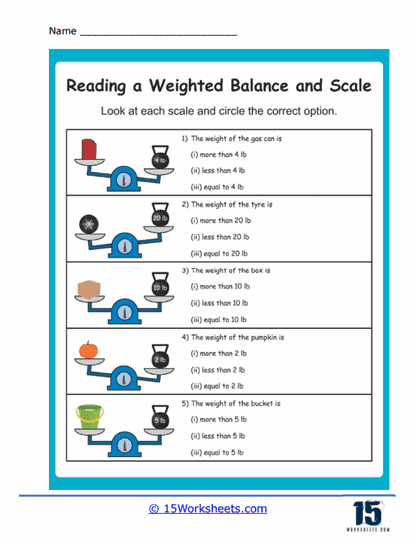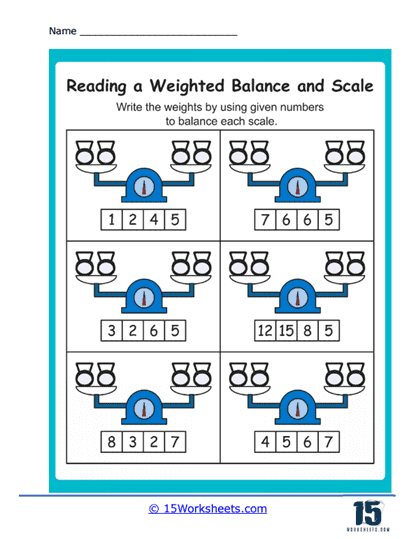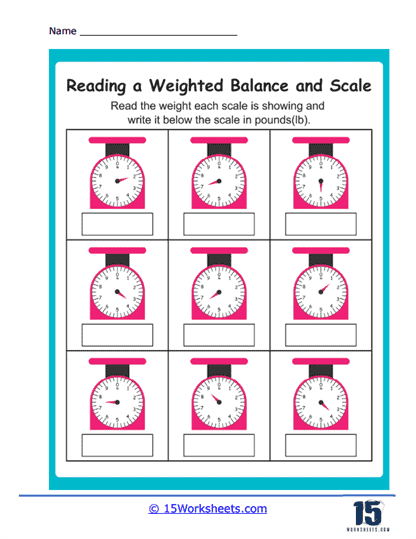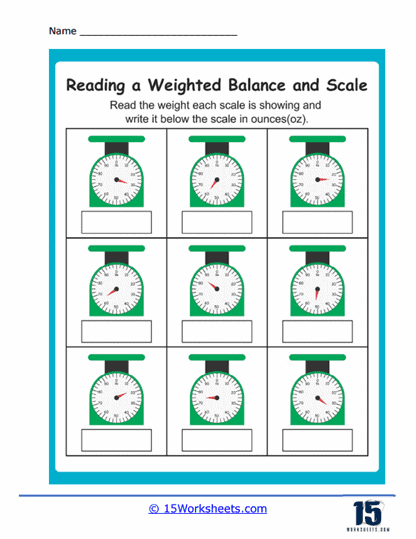Reading Balances and Scales Worksheets
About These 15 Worksheets
Mass is a measure of the amount of matter contained in an object. It’s an intrinsic property, meaning it does not change regardless of where the object is located in the universe. Weight is the force exerted on an object due to gravity. It’s a result of the gravitational pull of a massive body, such as a planet or moon, acting on the object’s mass. Balances and scales are instrumental tools that help us measure these values.
Balances and scales are instruments used to measure the weight or mass of objects. While often these tools are referred to interchangeably commonly, they have distinct operational mechanisms and principles.
These worksheets were developed to help familiarize students with balances and scales and educate them on how to accurately read and interpret the measurements these instruments provide. They form an essential foundation for various scientific experiments, particularly in chemistry and physics, and also find relevance in real-world situations.
Types of Exercises on These Worksheets
Identifying Types of Balances and Scales – Students are presented with images or descriptions of different types of balances and scales, such as beam balances, spring scales, or digital scales, and are asked to identify or categorize them. This will familiarize students with different instruments used for measuring weight or mass and recognize the distinctions between them.
Reading Measurements – Various images of scales or balances displaying measurements are presented. Students are required to interpret and note the reading. These types of exercises can improve your skill of accurately reading and recording measurements from various instruments.
Estimating Weight or Mass – Before using any tools, students might be prompted to estimate the weight or mass of an object. Afterward, they can compare their estimate with the actual measurement. This can help you develop a foundational intuition for weight and mass and refine estimation skills.
Converting Units – Problems might ask students to convert weight or mass measurements from one unit to another, such as from grams to kilograms or ounces to pounds. These skills solidify understanding of the relationships between units of weight or mass and bolster mathematical proficiency.
Practical Measurement Scenarios – Situations involving real-life contexts where students need to weigh items, calculate differences in weight, or determine averages. This demonstrates the practical importance and applications of measuring weight and mass in daily scenarios.
Comparing Weights – Exercises might present multiple items and ask students to rank them based on weight or discern which item is heavier or lighter. This can help strengthen your analytical thinking and foster an understanding of relative weights.
What Do These Worksheets Teach Students?
Foundational Knowledge – At the heart of these worksheets lies the basic principle of weight and mass and the instruments used to measure them.
Instrument Proficiency – As students engage with various exercises, they become adept at using and interpreting readings from different balances and scales.
Analytical Skills – Estimating, comparing, and converting units hones students’ analytical capabilities and critical thinking.
Unit Relationships – By engaging in unit conversion tasks, students internalize how different units of weight and mass relate to one another.
Real-world Relevance – Practical scenarios and word problems underline the importance of understanding weight and mass in everyday situations, from grocery shopping to mailing packages.
Mathematical Integration – Beyond mere reading, these worksheets integrate arithmetic and sometimes algebraic reasoning, further broadening a student’s mathematical prowess.
Scientific Foundations – In fields like chemistry and physics, accurate measurements are paramount. These worksheets lay the groundwork for future scientific experiments and endeavors.
These worksheets can help you bridge the gap between abstract concepts of weight and mass and their tangible manifestations in the real world. As students navigate these exercises, they acquire not only a set of practical skills but also a deeper appreciation for the quantitative nature of the world around them. Whether it’s weighing ingredients for a recipe, determining the mass of a chemical sample, or simply mailing a package, the skills and knowledge imparted by these worksheets find applications in myriad facets of life and study.






